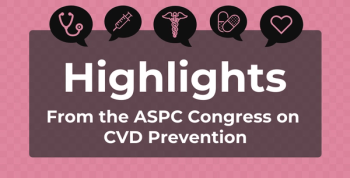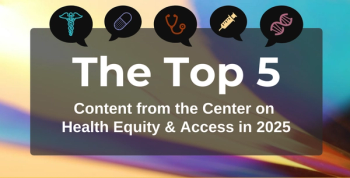
Comparing T2D Medication Initiation Patterns Among Medicare Advantage, Commercially Insured Patients
Medicare Advantage beneficiaries with type 2 diabetes (T2D) may be less likely than commercially insured individuals to be treated with newer medications to lower glucose levels, according to results of a retrospective cohort study published in JAMA Network Open.
Medicare Advantage beneficiaries with type 2 diabetes (T2D) may be less likely than commercially insured individuals to be treated with newer medications to lower glucose levels, according to results of a retrospective cohort study published in
Findings also highlighted greater disparities among lower-income patients, suggesting better understanding of nonclinical factors contributing to treatment decisions and efforts to promote equity in
Approximately 27% of US adults over the age of 65 have diabetes, and nearly 90% of those with diabetes take medication to lower glucose levels. Although metformin is largely considered the first-line drug to manage T2D, second-line therapies can be based on the presence of comorbidities like heart failure or chronic kidney disease, or affordability considerations.
Over the past 20 years, 3 classes of glucose-lowering medications were introduced: glucagonlike peptide-1 receptor agonists (GLP-1 RAs), sodium-glucose cotransporter-2 inhibitors (SGLT2i), and dipeptidyl peptidase-4 inhibitors (DPP-4i). However, “data regarding diabetes management for people with Medicare Advantage vs commercial health insurance coverage are scarce,” authors explained.
To better understand medication use patterns among these cohorts, investigators analyzed initiation trends of GLP-1 RA, SGLT2i, and DPP-4i treatments from January 1, 2016, to December 31, 2019.
Deidentified claims data of patients between ages 58 and 66 were collected from OptumLabs Data Warehouse. Additional patient characteristics including age, sex, race/ethnicity, and other variables were ascertained at the time of index date.
Of the 382,574 identified adults with pharmacologically treated T2D (52.9% male), 172,180 were Medicare Advantage enrollees and 210,394 were commercial beneficiaries. Within the study window, adjusted rates of initiation of all 3 drug classes increased among all participants:
- From 2.14% to 20.02% for GLP-1 RAs among commercial insurance beneficiaries and from 1.50% to 11.44% among Medicare Advantage beneficiaries.
- From 2.74% to 18.15% for SGLT2i among commercial insurance beneficiaries and from 1.57% to 8.51% among Medicare Advantage beneficiaries.
- From 3.30% to 11.71% for DPP-4i among commercial insurance beneficiaries and from 2.44% to 7.68% among Medicare Advantage beneficiaries.
However, data showed initiation rates for all 3 classes were consistently lower among those enrolled in Medicare Advantage compared with commercial insurance beneficiaries, despite similar formulary designs. Odds of initiating each class ranged each calendar year from:
- 0.28 (95% CI, 0.26-0.29) to 0.70 (95% CI, 0.65-0.75) for Medicare Advantage and commercial insurance beneficiaries, respectively, for GLP-1 RA treatments.
- 0.21 (95% CI, 0.20-0.22) to 0.57 (95% CI, 0.53-0.61), respectively, for SGLT2i treatments.
- 0.37 (95% CI, 0.34-0.39) to 0.73 (95% CI, 0.69-0.78), respectively, for DPP-4i treatments (P < .001 for all).
Furthermore, “the odds of starting GLP-1RA and SGLT2i increased with income; for an income of $200,000 and higher vs less than $40,000, the odds ratio for GLP-1RA was 1.23 (95% CI, 1.15-1.32) and for SGLT2i was 1.16 (95% CI, 1.09-1.24),” researchers wrote. Previous research has demonstrated that lower income is associated with worse glycemic control and diabetes-related health outcomes.
Black, Hispanic, and Asian patients were also less likely to begin GLP-1 RA treatment compared with White patients, while Asian patients were also less likely to start SGLT2i treatments. “However, rates of initiation of DPP-4i treatment were higher among racial/ethnic minority groups than among White patients,” the authors wrote, but the cause behind this finding remains unknown.
Because data were amassed from a single, large, national health insurance company, results may not be generalizable to other private and public health plans. In addition, as the analysis focused on initiation of treatment as opposed to adherence, findings may underestimate the association of cost-related barriers with evidence-based medication use.
The treatment initiation gaps identified by this analysis among patients with preexisting high-risk conditions point to the potential for improved diabetes management and health outcomes among those with Medicare Advantage. In addition, “the effect of the observed disparities may be unknown until the long-term benefits of these agents are more definitively established,” authors wrote.
“The findings suggest that innovative solutions are needed to address logistical and financial barriers to evidence-based diabetes management, including simplifying coverage requirements, reducing cost-sharing responsibilities, and creating transparent and straightforward avenues for all patients to obtain and afford the medications they need to optimally manage their disease,” they concluded.
Reference
McCoy RG, Van Houten HK, Deng Y, et al. Comparison of diabetes medications used by adults with commercial insurance vs Medicare Advantage, 2016 to 2019. JAMA Netw Open. Published online February 1, 2021. doi: 10.1001/jamanetworkopen.2020.35792
Newsletter
Stay ahead of policy, cost, and value—subscribe to AJMC for expert insights at the intersection of clinical care and health economics.








































